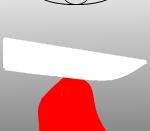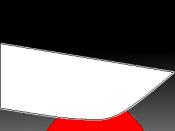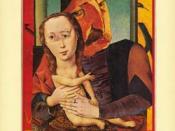In Margaret Atwood's "The handmaid's tale" and Judith Wright poems, some subject matters are similar because there are a lot of imageries based on children and men, from voices of a woman. In "the handmaid's tale" the narrator has lost her child and husband, and in some Judith Wright poems it is about a woman's love for men, and a child being born. Looking at the imagery and language used, we can compare between the approach the writers are making and the difference between these emotions, as well as the readers' responses.
In Judith Wright poem "Women to Men", the persona expresses her love to her lover. In the second stanza she directly addresses her lover, "This is no child with a child's face; this has no name to name it by; yet you and I have known it well." This not only describes the close relationship between the two lovers that they can have a child, it has a mysterious connection between the two, that no one can tell.
It uses language to bring romance and the nature of love to the readers.
In "the handmaid's tale", Offred describes her memories with her husband Luke without a romantic tone. She describes she used to walk together, and used to talk about buying a house, and swings for children. The language is very ordinary and straight-forward, it only reflects the life cycle of a married couple - settling down and have children. The ordinary language reflects Offred's stable life she used to have, and her character that she is easy to feel content. Since this is the language she uses to tell this story as a handmaid, it may be possible that her romantic love for Luke is fading away, but she is just looking back her ordinary...



My comment
needs more evidence to back up your thesis: you need to use more quotes!
0 out of 0 people found this comment useful.